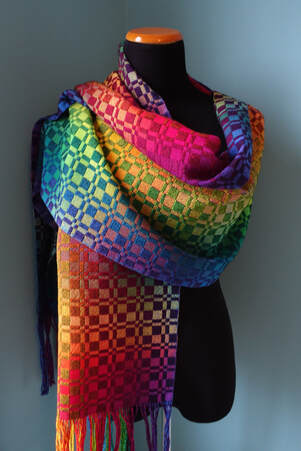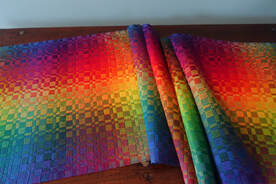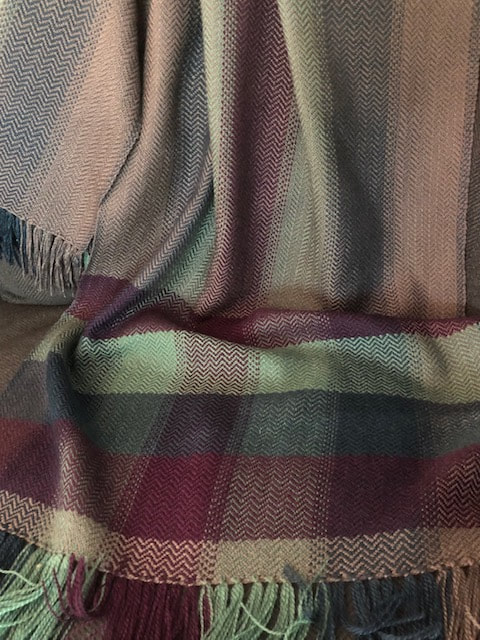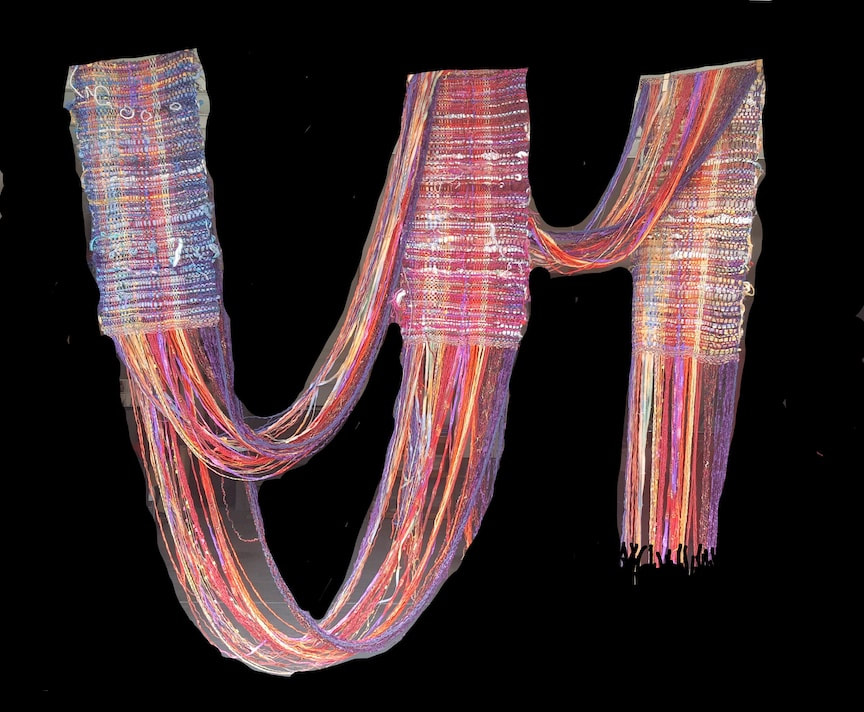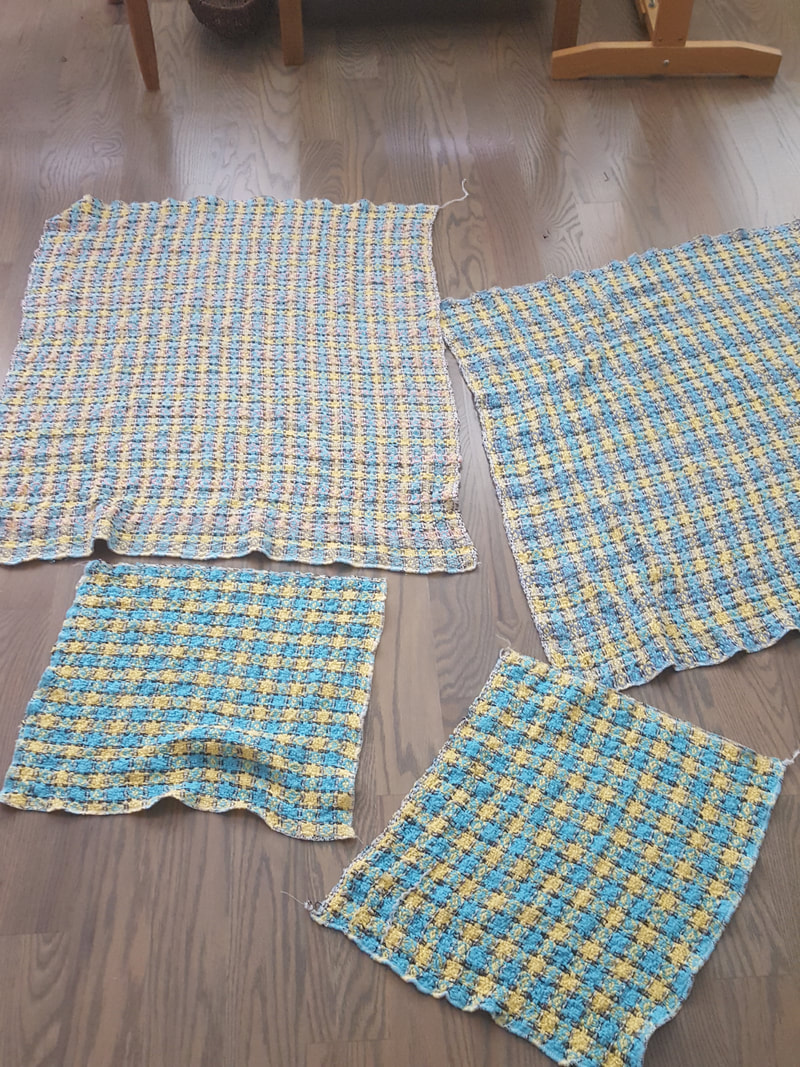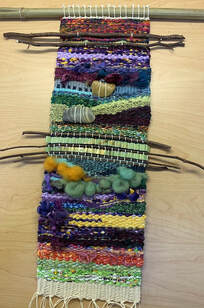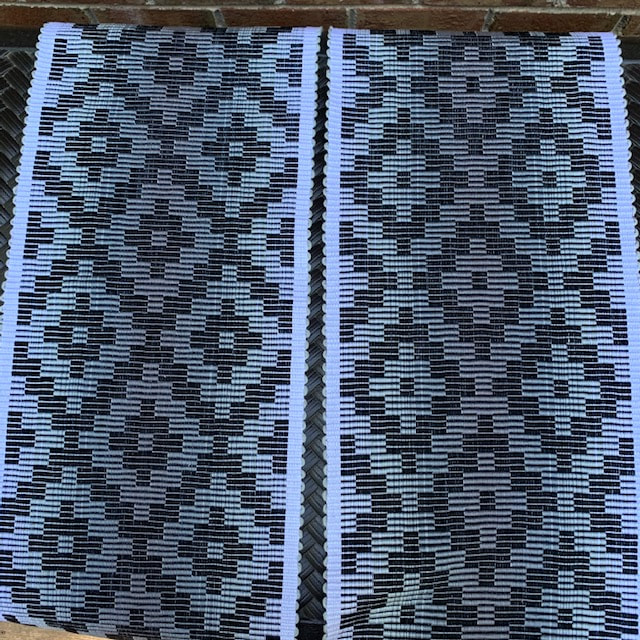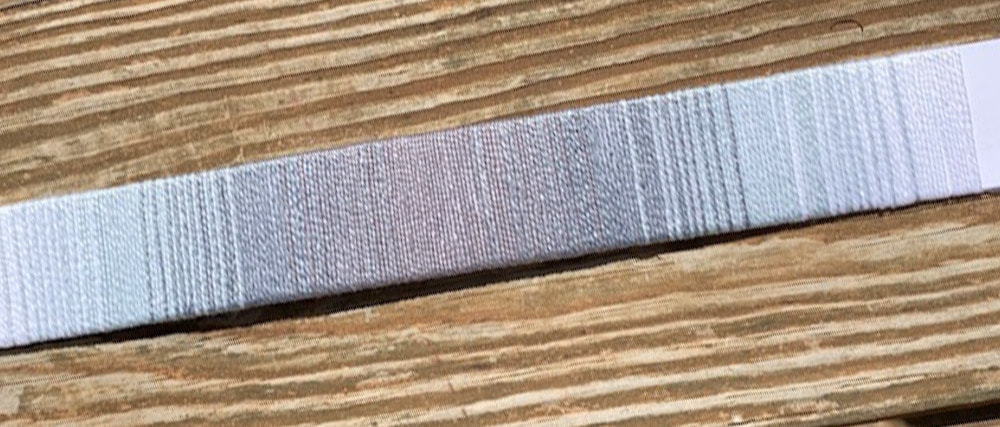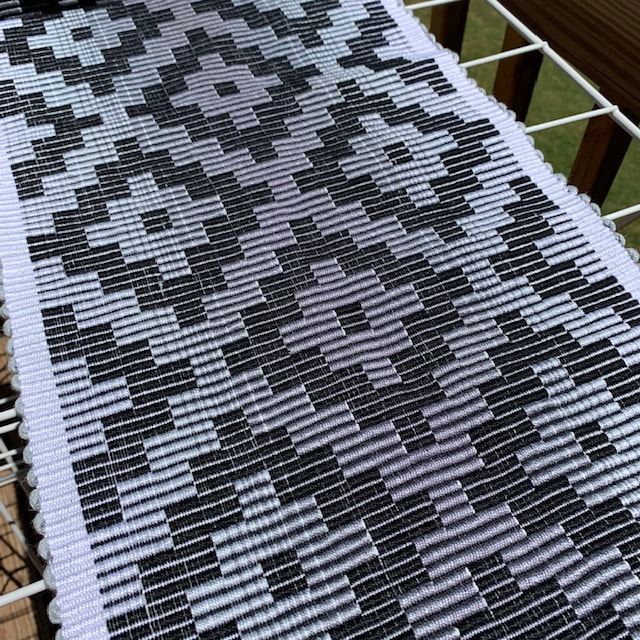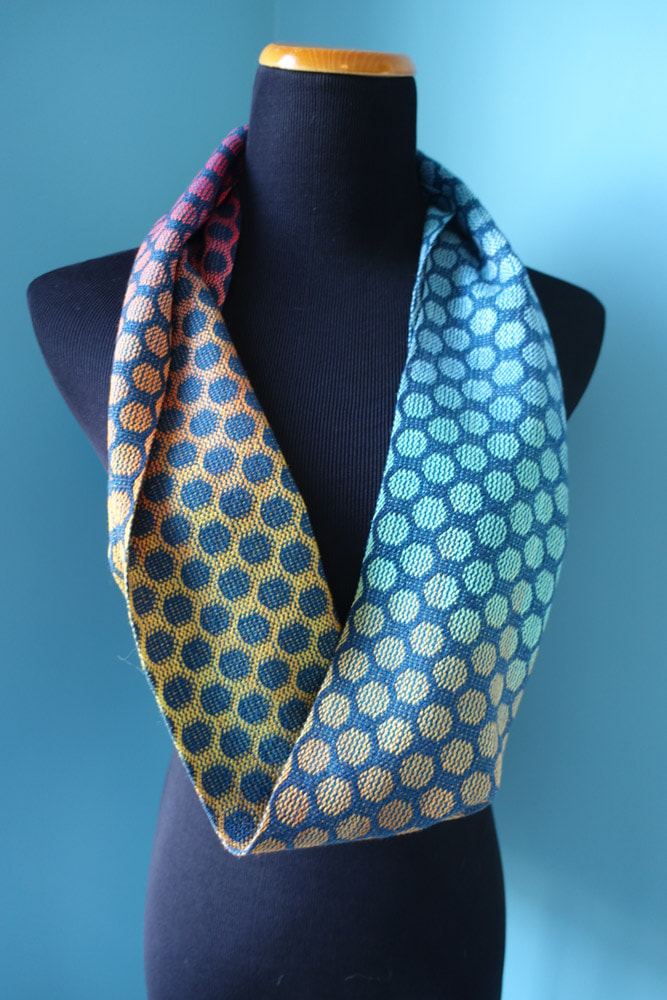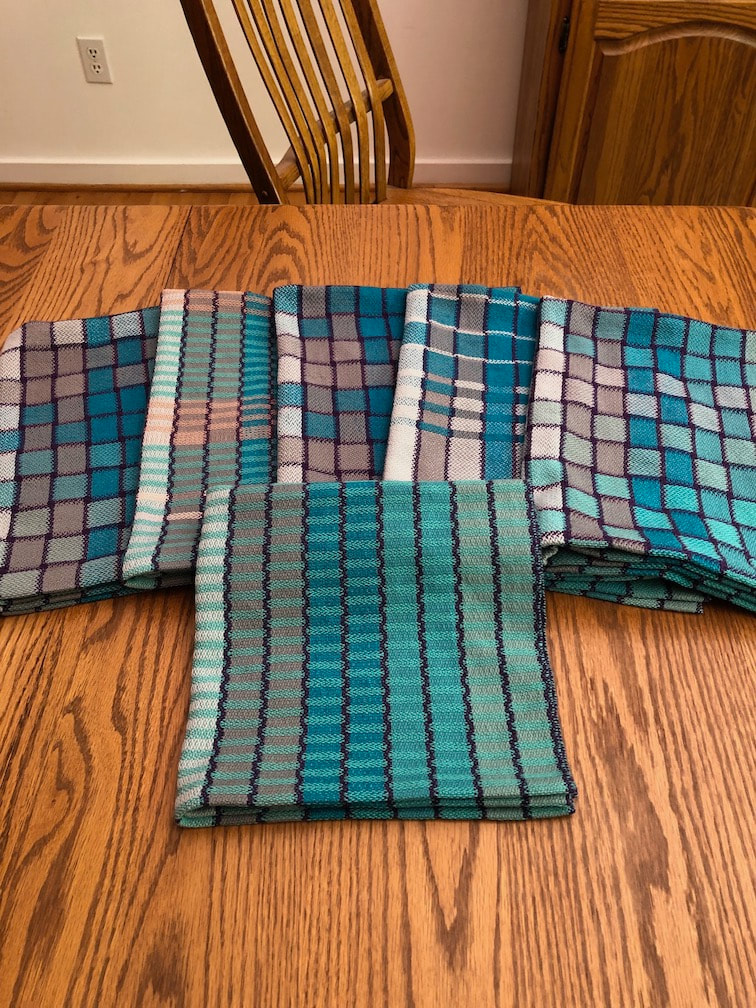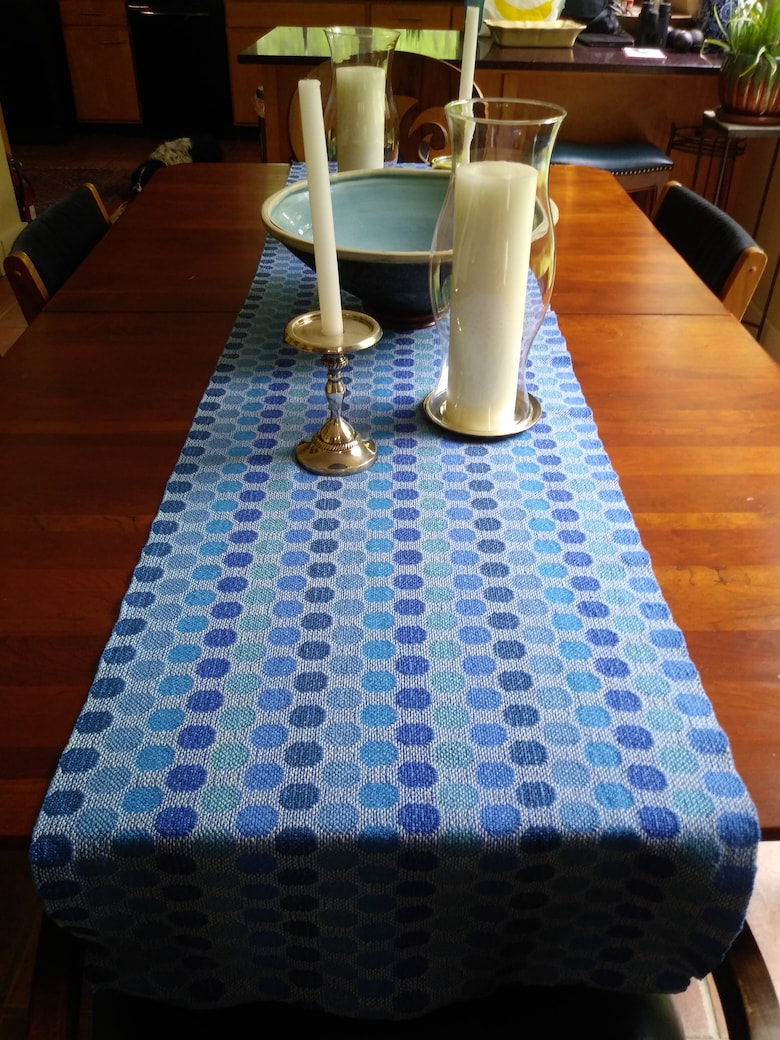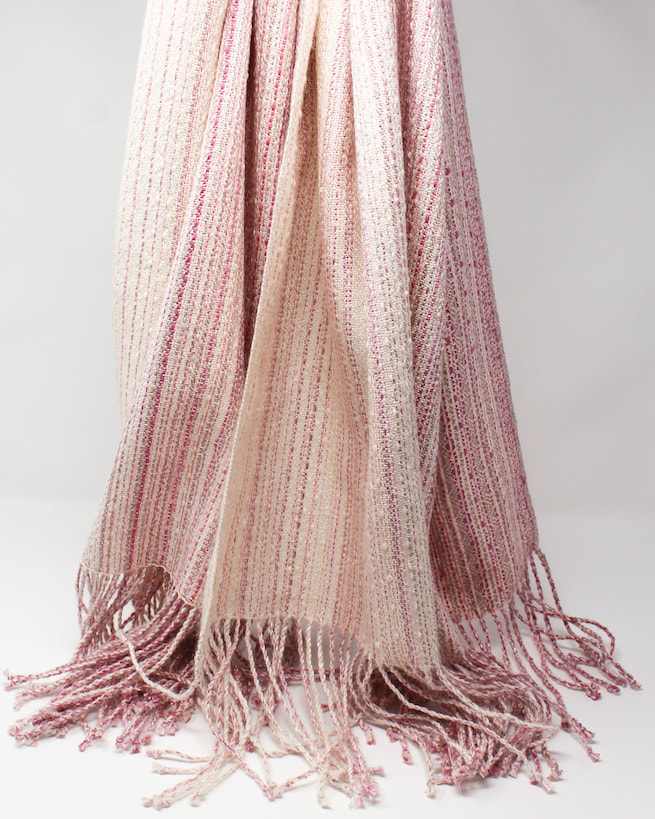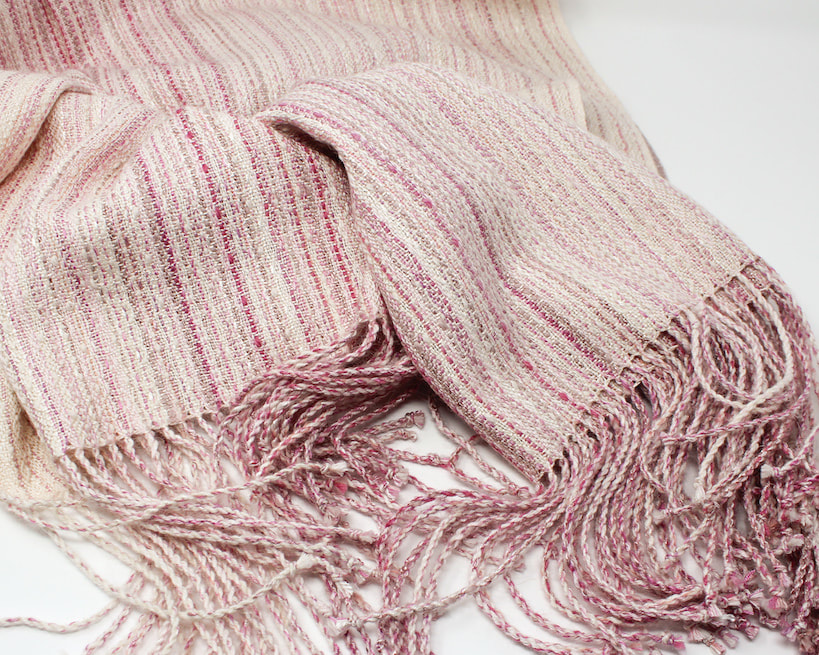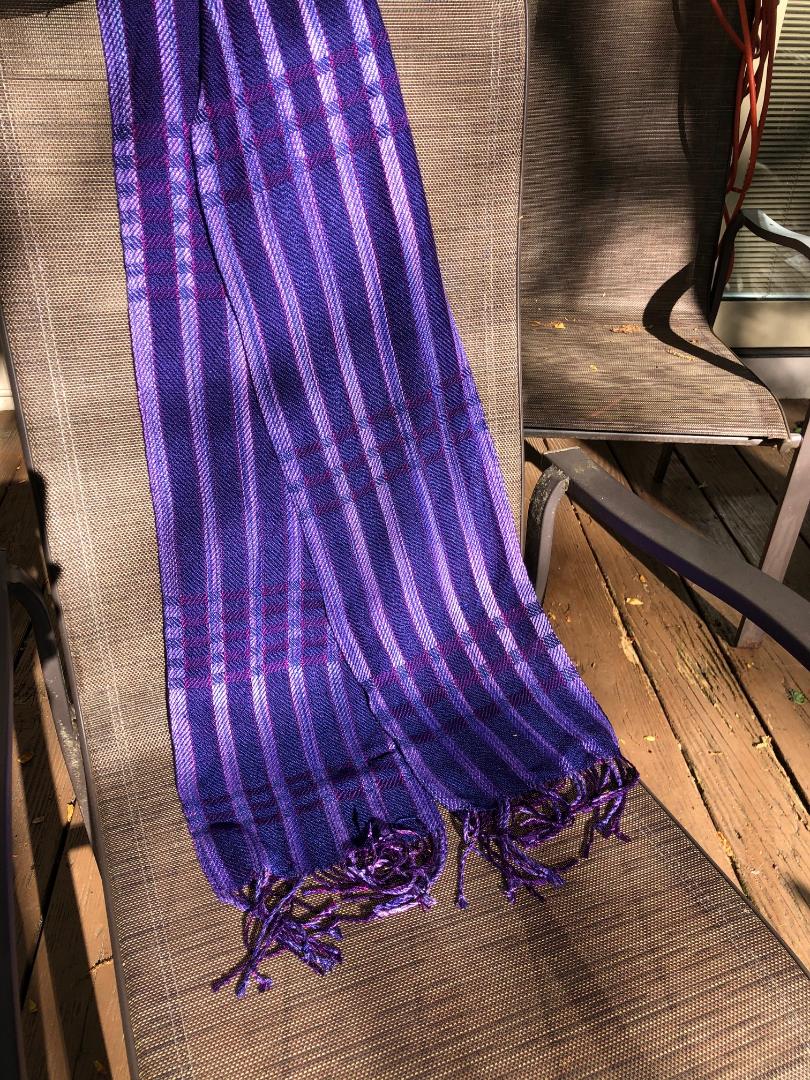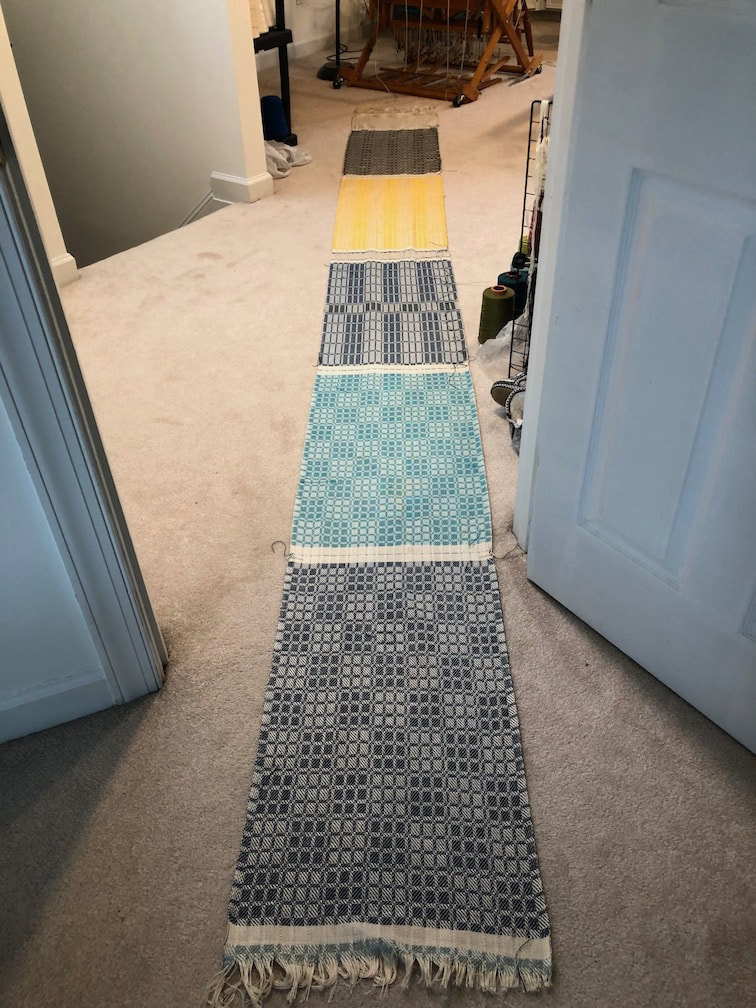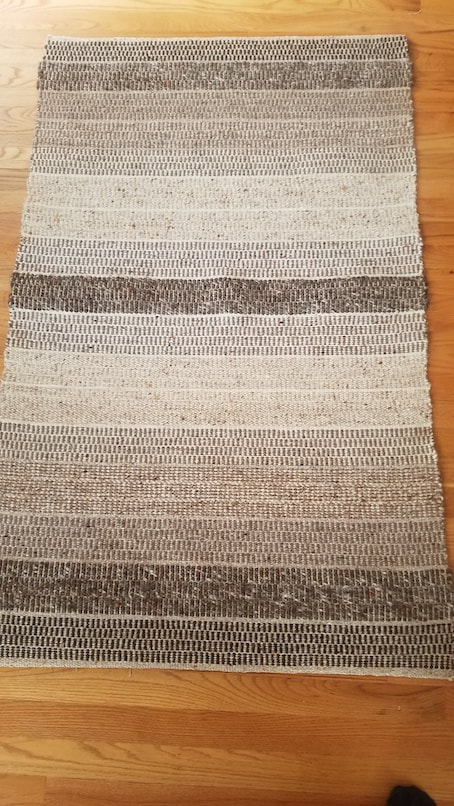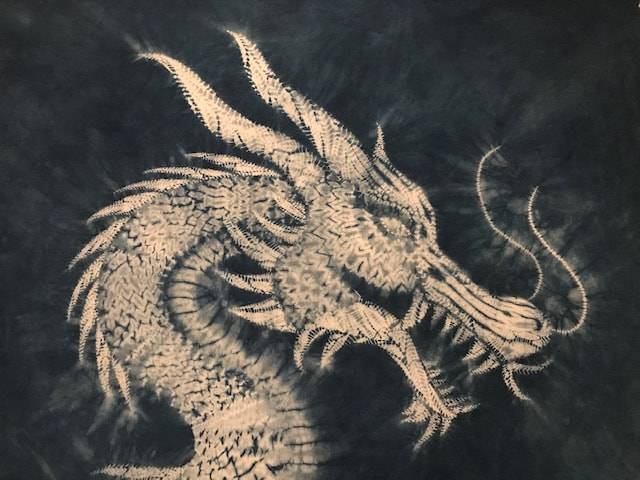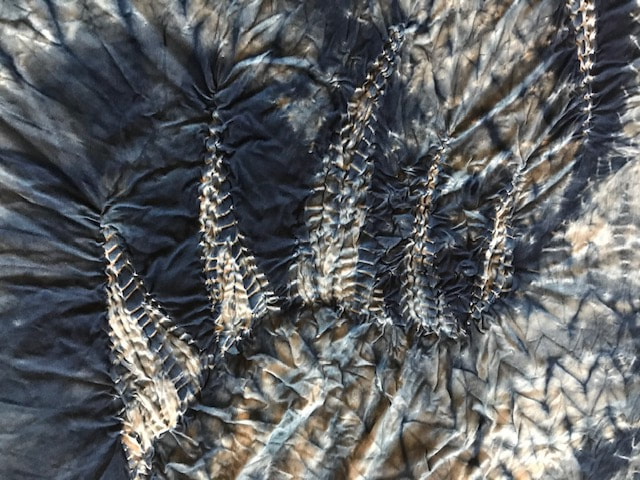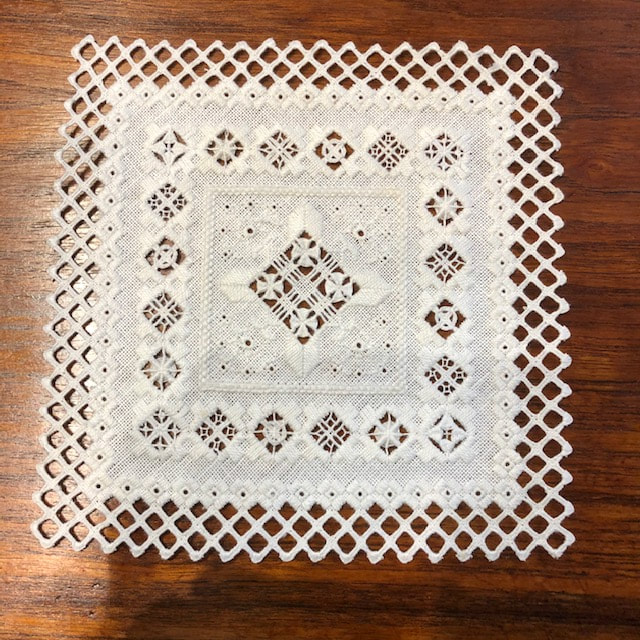HOT! Off the Loom 2020 |
|
These pictures are archived from previous years. The most recent photos are shown below with the newer events at the top. Scroll down to see older events. Click on any photo to zoom in closer.
|
|
Pattie Lamb
This is my take on the wonderful Jennifer Moore Doubleweave Spectrum Shawl. Woven using 20 Lunatic Fringe colors in 10/2 cotton, I altered the threading and treadling to create a different doubleweave pattern. The shawl on the left was woven with the a progression of pairs of the spectrum colors. The runner on the right was woven with the 20 colors paired with black tencel. |
|
Pam James
I did this wall hanging for a friend. I had been wanting to try something arty with unwoven warp. I did a very tiny sample to understand how it would drape and laid yarn out on my floor to try to get the right dimensions. At some point, I decided that you really couldn’t have too much drape. I was wrong!!! The 2 smaller drapes that go from the first to the last panel are actually one long drape. Also I did trim the fringe on the right end 8”- 10”. Yarns are various novelty and textured yarns, mostly upcycled sweater yarn. It is woven with many of the same yarns plus some rovings and globs of threads from my dryer when I washed a bunch of drapery samples. VERY fun to do! |
|
Pam James
I found out 2 new neighbors were both expecting babies in August and decided to weave my first baby blankets. Was also influenced by someone who mentioned that if there was extra warp it could be burp rags. Since my neighbors weren’t considerate enough to have babies of the same sex I was forced to figure out how to weave both boy and girl blankets on the same warp. I modified a twill pattern to add the window pane effect and then wove the yellow and turquoise warp with alternating yellow, gray and pink or yellow, gray and blue. The burp cloths are just yellow and turquoise. First pic is all unfinished. The second pic is the girl version hemmed and finished. |
|
Dianne Byrne Sticks and Stones is a free-form piece woven as a project for the Contemporary Textiles study group. Our September theme is "Sticks, Stones, and Stitches," so I've inserted small found stones and tree limbs. The weft is a hodgepodge of fabric strips, paper, ribbon, and yarn, with some clouds of wool roving. |
|
Shula Bernard
Shula wove this beautiful scarf as a gift for her sister-in-law. The warp is 8/2 tencel - solid stripes on the borders, variegated in the center. The weft is 20/2 silk. The scarf was inspired by Pattie Lamb's Seaside Magic article in the September/October issue of Handwoven. August 2020 |
|
Jackie Heller
|
|
Click on the video to play. To enlarge to full screen, click on the arrows in the lower right corner. Press ESC to return to normal screen viewing. |
|
Sharon Grubb
After completing Jennifer Moore’s Double Rainbow workshop in March, I was inspired to weave her Full Spectrum shawl. She had an example at the workshop and it positively glowed. It is a two-block doubleweave in 10/2 perle cotton that rotates the 20 Tubular Spectrum colors in both warp and weft. The colors rotate through the warp with 4 colors in each 1” block, using her double rainbow technique in which each time you change the block, you drop the first color and add a new one. I slightly modified the treadling blocks but otherwise followed Jennifer’s pattern which I purchased from Lunatic Fringe. The outcome is stunning, and is one of the most beautiful pieces I’ve seen using the Tubular Spectrum yarns. June 2020 |
|
Joan Beebe
I decided to make a table runner for a wedding gift, but the bride is all about black/white/gray, and rep weave is usually all about blocks of color. There weren’t enough variations of gray available online to simply swap color for gray. Using the pattern, “My Father’s Daughter: Rug to Runners” from Handwoven Sept/Oct 2019, I wound the warp as a “fade” using white and 3 shades of gray for the pattern colors and black and white for the background, all Marion’s suggestion. I'm super pleased with the results — the runner is totally reversible. I even hemmed the ends in opposite directions, so there is truly no right/wrong side. May 2020 |
|
Jancie Kohl
I wove these towels as a house warming gift for a friend. The draft is one of my favorites from the Carol Strickler book of 8-Shaft Patterns. It is pattern #246 on page 60. The towels were woven using 8/2 unmercerized cotton and 22/2 cottolin in the warp and weft. The sett was 24 epi. I used the treadling in the book for all of the towels except the one on the foreground. May 2020 |
|
Kelly Walsh
Hot off the Sewing Machine! These tote bags feature scraps left over from a set of those turned taquete hand towels that everybody loves! I never leave yarn at the end of a warp anymore, even if its not enough for another towel I can always find something to do with the cloth. The bottoms of the bags are made with rescued scrap leather from fashion waste, and the inside lining is simple quilting cotton. They'll be perfect for shopping, or a day out .... whenever that starts to happen again ;-) May 2020 |
|
Peggy Myers
I fell in love with the structure from the article in Handwoven May/June 2019 page 46-a turned taquete. I wove it in pinks to make bassinet toppers for the hospital. I tried all 3 treadling drafts and showed them to my friend. We had talked over the years about a table runner, and after showing her the toppers as well as the blues and teals in my stash the decision was made. The yarns are UKI mercerized cotton in 5/2 for the colors and an 8/2 unmercerized cotton for the neutral. May 2020 |
Peggy Sanford
A friend arranged a tour of the UNC baseball facilities for my grandson when he came to visit last October. My favorite part was learning that they had Carolina blue trashbags! My friend arranged for me to get one, and I used it to weave her a "bag o' bags." It will be a surprise gift for her imminent retirement from Carolina. May 2020 |
|
Donna Eash
While in "stay at home" mode I'm learning new Rigid Heddle skills. First attempt at warp and weft floats. 10-dent Heddle on 15" Cricket. April 2020 |
Pattie Lamb
My latest project was a pair of scarves woven in a very modified version of everyone's favorite twill: Strickler 725. These scarves are 100% tencel and used a hand painted warp from Carr Park Artisans and solid tencel borders. The scarf pictured was woven with a silver tencel weft. April 2020 |
|
Kelly Walsh
I just finished this piece and I'm super proud of it! I feel like it shows off the magic the magic that happens when a lot of different fibers are combined - something I've always been slightly afraid to do. The warp contains linen, cotton, silk, alpaca, mohair, and merino wool, all somewhat randomly arranged to create an asymmetrical color transition. The weft is tencel. The inspiration for the colors were the pink dogwood trees that are in bloom all over my neighborhood. April 2020 |
|
Linda Ladner
All of the scarves I made are made from tencel. I am making them for nurses in New York City. My children and grandchildren are there and I feel a bit helpless here. Maybe I can make somebody smile with one of these. The purple scarf is a turned twill . I learned this pattern from Pattie In one of her classes. The other scarves are from a pattern called raku from the 60 scarves book. Then of course I had to make towels. April 2020 |
|
Kathy Wulff I recently wove this wide scarf/narrow shawl from a hand painted warp that I purchased at SAFF last Fall. This picture doesn't really show the variation in color of the warp very well but it transitions between mint green and lavender. About 2/3 of it is 8/2 rayon and the other 1/3 is something nubby - boucle? The weft is 8/2 Lavender Dragon Tale. April 2020 |
|
Beth Harvat If we were having a meeting this month, I would have brought these two rugs that I just finished. They are woven with wool rug yarns that I have been "saving" until I finally realized there is no time like now. Done in the Finish style of alternate colors - not sure what the official name of the technique is. I learned it at a weaving workshop in Finland about 35 years ago March 2020 |
|
Kelli Crispin's Dragon!
I thought about this piece for three years before I started working on it. Part of that time, I was just learning different techniques and the other part I was waiting for the right Dragon to come to me. Eventually I just had to make myself start working on it. I spent the last year stitching the image on and off. There are several different shibori stitching techniques in the dragon. The body is made up of stitches on a grid. The “scales” have stitches that run across the body and are offset in each row, which is similar to the look of woven shibori. The striped underbelly is also made up of stitches on the grid, but the stitches line up and run the length of the body. The spines, horns , and teeth use a kind of cross between make-age and maki-nui, using a whip stitch around the entire shape. The long whiskers are simply nui, a running stitch, and the eyebrow is ori-nui, a running stitch on a fold. For the eye and nostril, I got creative, thinking about how to use stitching to make the cloth come forward or go behind, so that there would be darker and lighter areas. The snout and forehead were also improvised, as I pleated the fabric and whip stitched it through all of the folds. I am quite happy with the presence it has. It is hanging in my living room and dominates the room. The image is quite fierce and powerful, but also protective, and I am happy it is finally in physical form! March 2020 |

